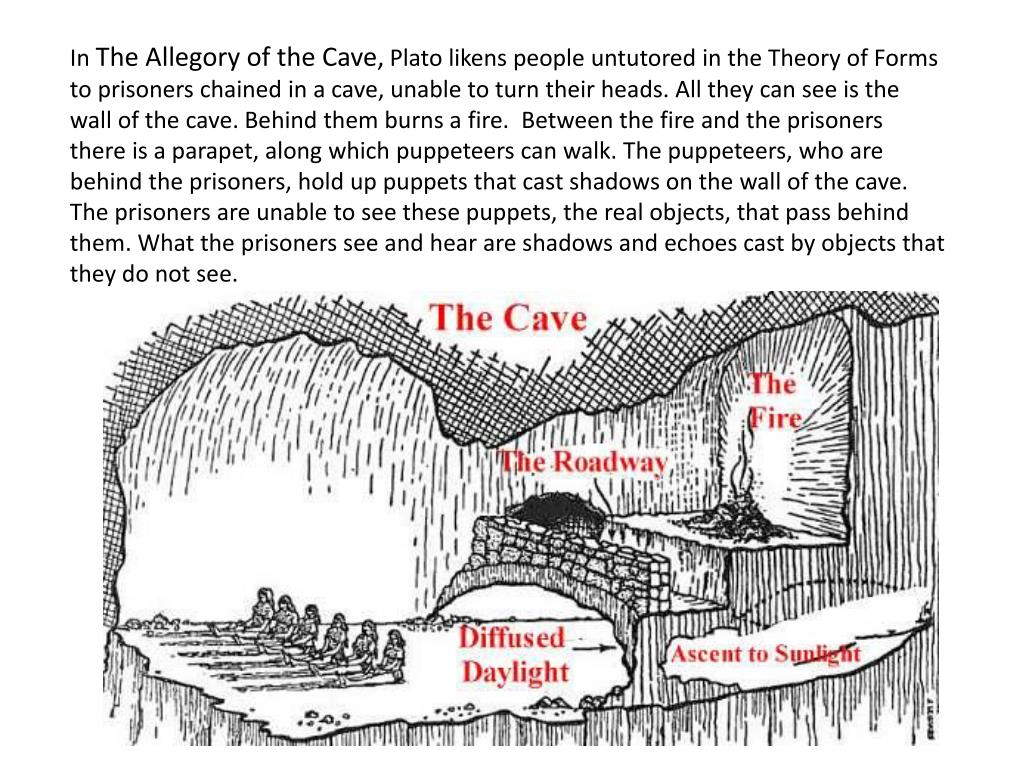
It is one of history's most important philosophical works dating back thousands of years. If he attempted to emancipate them from their chains, they’d kill him.Have you ever wondered how philosophy and narrative intersect? Where the difference lies between a film and reality? One way we decipher this complex message is through Plato’s Allegory of The Cave. He’d be jeered at for leaving: They’d say it wasn’t worth the trouble since all it resulted in was his vision becoming impaired. He would be compelled by the other cave dwellers to comment on the shadows as if they were real. The answer is that his eyes would be filled with darkness. How would he readjust? How would his fellow cave dwellers receive him?
#Allegory of the cave explained free#
It represents the place that we humans live and transact in, mistaking shadows for reality.Īnd so Plato beckons us to consider what would happen if the free man were to leave the upper world and return to the cave to resume his former life. To the contrary, the cave is the sense perceived world. This upper world represents what Plato would call the intelligible world, or the world of essential forms in which things exist in their perfect, unalterable forms. We now come to the last part of Plato’s cave allegory, in which the former cave dweller is a free man living in the upper world. The Sun as Goodness in the Allegory of the Cave He would eventually grow so accustomed to the upper world that he would be able to study the Sun’s nature. Finally, the escapee would be able to see the Sun, the brightest object in the upper world. After that, the different forms of the earth would become visible.

Similarly, the process of learning and acquiring knowledge requires time.įirst he would be able to see shadows.

The story continues: the escapee would need time to adjust before being able to see the things in the upper world. This is akin to the process of encountering true knowledge, of moving toward enlightenment, according to Plato. And so he’d cling to them and doubt the existence of all these other forms. After all, he would have spent his whole life until now believing that the shadows on the wall were real. And, to make things worse, he’d be perplexed by all the new forms he would come to see. If he were to make it to the cave’s entrance, the light flooding in from the outside would blind him. His body would ache and his eyes would be strained when looking at the fire. Now suppose one of these cave dwellers were to somehow break free of his chains. The Allegory of the Cave by Anton Dymtchenko, 2016, via Anton Dymtchenko Art Escape from the Cave: Moving toward enlightenment And, for this reason, it’s an unenlightened state. This is a state that accepts images and other sense perceived things wholly as reality. The shackled cave dwellers, for example, represent humankind’s lowest form of cognition, which Plato calls imagining. And the concepts being investigated here are the four states of human cognition, which are intelligence, thinking, belief, and imagining. Remember Plato’s Cave is an allegory, which means everything represents a concept, an ideal, or a principle. Sounds like a strange scenario on its face, right? Here, only a faint stream of light filters in from the outside world. Outside the chamber where the cave dwellers and puppet masters reside is a long corridor that leads to the cave’s opening.

And behind the puppet masters is a fire that illuminates the room and creates the shadows. Their only notions of reality are the shadows that pass on the wall before them.īehind these prisoners are the puppet masters, the ones who broadcast images onto the wall. They’ve been in shackles like this since childhood, and so they don’t even know they’re prisoners. All they can do is stare directly forward at a wall on which shadows move this way and that. These men have chains around their legs that hold their bodies in place, as well as chains around their necks to prevent them from rotating their heads. Imagine, if you will, a chamber beneath the ground in which a group of men are held as captives. Visual illustration of the allegory of the cave


 0 kommentar(er)
0 kommentar(er)
